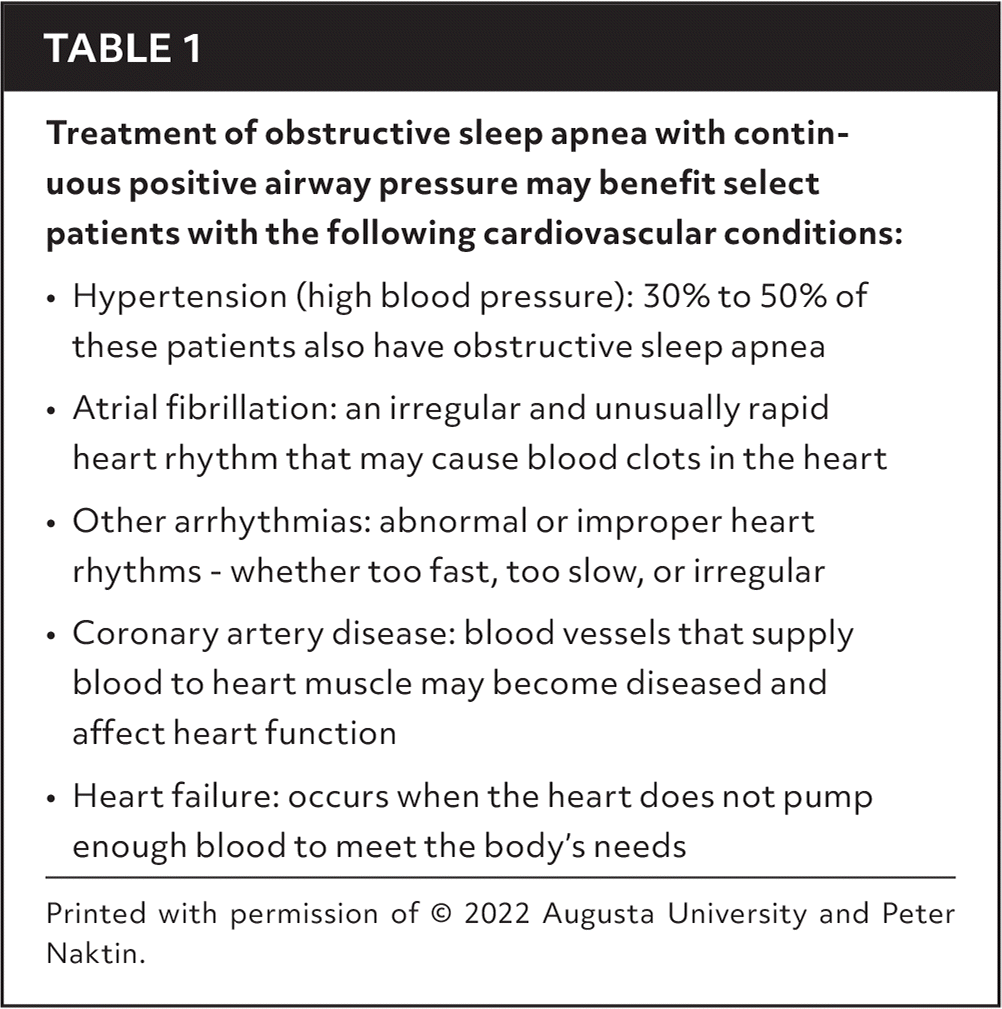
Am Fam Physician. 2024;110(1):online
Related article: Obstructive Sleep Apnea in Adults: Common Questions and Answers
WHAT IS HOME SLEEP APNEA TESTING?
Home sleep apnea testing monitors your breathing during sleep. It checks blood oxygen levels, heart rate, breathing effort, and air movement from the nose. Most home sleep apnea tests do not monitor brain waves and cannot tell the exact amount of time someone is asleep. Home sleep apnea testing uses a movement sensor to know when someone stays still. It uses that information to represent when someone is asleep. You can get up to use the restroom at night while wearing the device because those data are removed from the recording.
WHAT TYPES OF PROBLEMS CAN A HOME SLEEP APNEA TEST IDENTIFY?
Home sleep apnea testing can tell if you have obstructive sleep apnea (OSA). In OSA, the airway collapses, and a person is not able to move air through the closed area (the patient “can't breathe”). Symptoms of OSA may include loud snoring, restless sleep, feeling tired during the day, pauses in your breathing noted by a partner, and waking often during sleep. Home sleep apnea testing can also tell if you have central sleep apnea. This is when the body temporarily fails to take a breath while the airway is open (the patient “won't breathe”). Central sleep apnea is more common in people with heart failure. Home sleep apnea testing may also reveal low oxygen levels that are not related to sleep-disordered breathing but may be due to other heart and lung conditions.
HOW IS SLEEP APNEA RELATED TO MY HEART?
When breathing is disrupted at night, it can harm the heart by lowering blood oxygen levels, changing the heart rate, and increasing blood pressure. These changes can stress the heart and lead to cardiovascular disease.1 People with OSA are at higher risk of an irregular heartbeat.2 People with OSA are also more at risk of death from a heart attack (myocardial infarction).3 Many patients with heart failure—when the heart struggles to pump blood around the body—have sleep apnea and are more likely to stay in the hospital.4–6 Treating sleep apnea in patients with cardiovascular disease is good, particularly in people with symptoms of sleepiness. However, it is unclear which groups of patients with cardiovascular disease benefit the most from treatment.7 Cardiovascular conditions that may benefit from treatment are shown in Table 1.

Treatment of obstructive sleep apnea with continuous positive airway pressure may benefit select patients with the following cardiovascular conditions:
|
WHAT HAPPENS AFTER I DO MY HOME SLEEP TEST?
Your doctor reviews the data collected from the home sleep apnea test and makes a treatment plan based on your health history. Staying at a healthy weight and being active are important for treating sleep apnea.8 By taking your prescribed medicines, controlling your weight, getting aerobic exercise, and doing your best to follow your sleep apnea treatment plan, you can take care of your heart so that it can take care of you.
Healy WJ, Khayat R, Kwon Y. Obstructive sleep apnea in adults: common questions and answers [patient information]. Am Fam Physician. 2024;110(1):online.
This handout is provided to you by your family doctor and the American Academy of Family Physicians.
This information provides a general overview and may not apply to everyone. Talk to your family doctor to find out if this information applies to you and to get more information on this subject. Copyright © 2024 by the American Academy of Family Physicians. Individuals may photocopy this material for their own personal reference, and physicians may photocopy for use with their own patients. Written permission is required for all other uses, including electronic uses.

